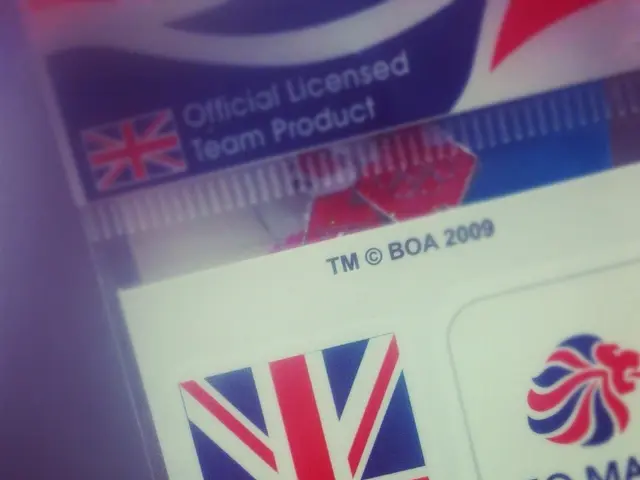Creating a Sealed Ecosystem: A Step-by-Step Guide for Crafting Your Own Terrarium
In the realm of indoor gardening, closed terrariums have gained popularity as a unique and low-maintenance option. These glass enclosures recreate natural cycles and offer a beautiful, self-sustaining ecosystem that thrives with minimal effort. Here's a step-by-step guide to building your own self-sustaining closed terrarium.
### Essential Layers for a Closed Terrarium
The foundation of a closed terrarium lies in its layers. Begin with a drainage layer, which prevents water from pooling and causing root rot. This layer can consist of pebbles, gravel, LECA (lightweight expanded clay aggregate), or pottery shards, measuring 2.5–5 cm in depth.
Next, add a filtration layer of activated charcoal, roughly 0.5–1 cm, which helps filter the water, keeps the environment fresh, and prevents mold and odors.
The substrate layer follows, using a quality soil mix tailored for terrariums, often a blend of potting soil, perlite, peat or coir, and compost (a common ratio is 3:1:1). This provides nutrients and proper aeration for plant roots.
A moss layer, either sheet or cushion moss, is placed on top of the soil. Moss helps retain moisture, adds a decorative touch, and can prevent soil erosion inside the terrarium.
Finally, plant humidity-loving plants suited for closed terrariums such as small ferns, mosses, fittonias, or baby tears. Create holes in the substrate, place the plants, and gently firm the soil around their roots.
(Optional) Decoration such as small decorative elements or hardscape like stones or wood can be added for aesthetics and habitat complexity.
### Assembly Process
Choose a clean glass container, washing it thoroughly to avoid contamination. Layer the materials in the order described above, plant your selected plants carefully, lightly mist the moss and soil to moisten but avoid sogginess, and seal the container with a lid to create a closed environment which recycles moisture and air.
### Care and Maintenance
Place the terrarium in bright, indirect or partial sunlight, avoiding direct hot light to prevent overheating. Water only occasionally, as a closed terrarium recycles moisture. Overwatering can be harmful. If condensation builds up excessively, briefly open the lid to allow air exchange. Monitor plants for health and prune dead material.
Consider adding microfauna like springtails and isopods to help control mold and break down organic matter, creating a bioactive system.
### Tools and Supplies
- Glass container (jar or specialized terrarium vessel) - Drainage media (clay pebbles, gravel) - Activated charcoal (aquarium grade) - Substrate mix (potting soil blend) - Moss (sheet or live moss) - Plants suitable for closed terrariums - Spray bottle for misting - Tweezers, funnel, gloves for assembly
### Kits for Beginners
For those seeking an all-in-one solution, kits exist that include all essential materials such as premium soil, live moss, plants, pebbles, and illustrated instructions to simplify setup and guarantee success.
With these steps, you'll be well on your way to creating a self-sustaining closed terrarium ecosystem that recycles water and air, requires minimal watering, and offers a beautiful, low-maintenance indoor garden. Happy gardening!
[1] [Terrarium Tips: Building a Self-Sustaining Closed Terrarium](https://www.gardeningknowhow.com/garden-how-to/vp/terrarium-tips-building-a-self-sustaining-closed-terrarium.htm) [2] [How to Make a Closed Terrarium: A Guide for Beginners](https://www.diynetwork.com/how-to/outdoors/gardening/how-to-make-a-closed-terrarium-a-guide-for-beginners) [3] [Building a Self-Sustaining Closed Terrarium](https://www.instructables.com/id/Building-a-Self-Sustaining-Closed-Terrarium/) [4] [Creating a Self-Sustaining Closed Terrarium](https://www.wikihow.com/Create-a-Self-Sustaining-Closed-Terrarium) [5] [The Ultimate Guide to Building a Self-Sustaining Closed Terrarium](https://www.apartmenttherapy.com/how-to-make-a-closed-terrarium-257608)
1.The care and maintenance of a closed terrarium involve placing it in low-light conditions, watering sparsely, and monitoring plants for signs of health.2. In addition to indoor gardening, one can explore various lifestyle categories such as fashion-and-beauty, food-and-drink, home-and-garden, education-and-self-development, and travel.3. Maintaining a closed terrarium's self-sustaining ecosystem can be further improved by adding microfauna like springtails and isopods that help control mold and break down organic matter.4. For those new to closed terrarium care, kits are available that offer an all-in-one solution with essential materials and instructions for a successful setup.




